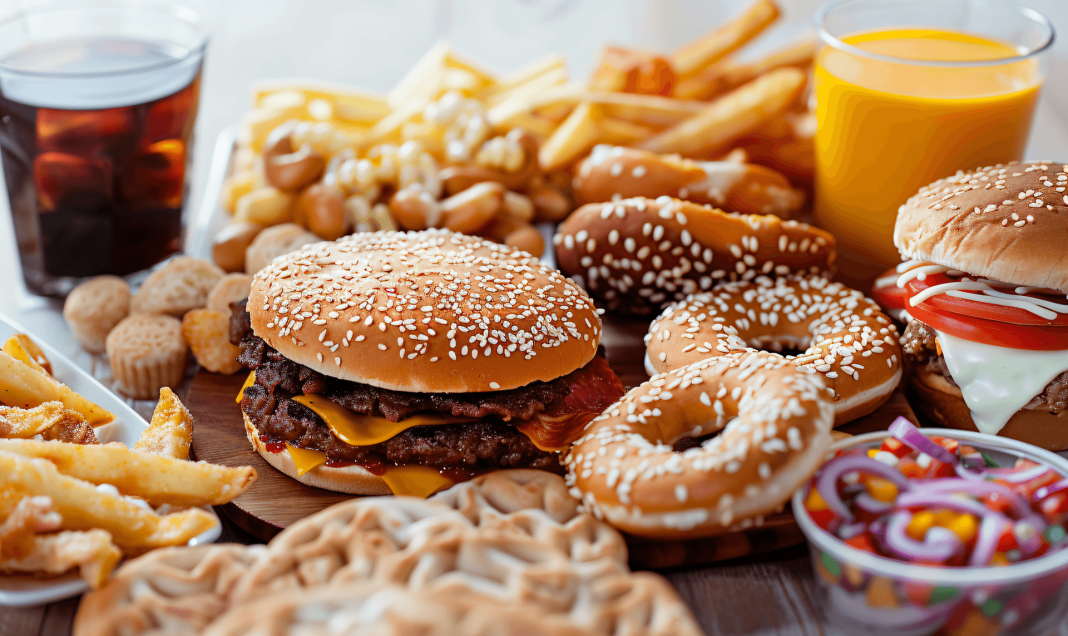This content is provided by the Pioneer Bird Blood Sugar Management Software! It helps you track blood sugar, blood pressure, and other health indicators, offers free tasting of sugar-free foods, and provides customized diet and exercise plans to accompany you in sugar control.
As a nutritionist, I often encounter various doubts and misconceptions about diet from diabetes patients in my work. Among them, trans fats are a topic of particular concern. The World Health Organization (WHO) has clearly pointed out that trans fats pose a much higher risk to cardiovascular diseases than other types of fats and calls for the eradication of industrially produced trans fats by countries. So, where exactly are these “blacklisted” trans fats hidden? Below, I will share some experiences to help you identify and avoid these harmful fats.
1. Hazards of Trans Fats
Trans fats are a type of unsaturated fatty acid with a molecular structure different from other fats, making their metabolism in the body more complex and prone to causing a range of health problems:
– Increase the risk of cardiovascular diseases: Trans fats can increase LDL (bad cholesterol) levels, lower HDL (good cholesterol) levels, and increase the risk of blood clot formation.
– Lead to insulin resistance: Trans fats may disrupt the normal function of insulin, increasing the risk of developing diabetes.
– Trigger obesity: Trans fats have a high energy density, making them easy to overconsume, leading to obesity.
2. Sources of Trans Fats
Trans fats mainly come from two sources: naturally present in certain animal-based foods such as dairy products, meats, and industrially processed, such as partially hydrogenated vegetable oils. The following are common hiding places for trans fats:
– Margarine and shortening: Some manufacturers add hydrogen to vegetable oils to extend shelf life and enhance food texture, producing trans fats. These margarine and shortening are often used in baking and frying foods.
– Certain packaged snacks: Such as potato chips, cookies, cakes, etc., these foods may use hydrogenated vegetable oils containing trans fats in the processing.
– Fast food and fried foods: Some fast-food chains and street-side fried food stalls may use oils with a higher content of trans fats to cook food to reduce costs.
3. How to Avoid Trans Fats
– Read food labels carefully: When buying food, check the nutrition facts label. If you see wordings like “partially hydrogenated vegetable oil,” “margarine,” “shortening,” etc., try to avoid purchasing.
– Choose healthy cooking oils: When cooking at home, try to use unhydrogenated vegetable oils such as olive oil, peanut oil, canola oil.
– Reduce intake of fast food and processed foods: Try to cook at home as much as possible, reduce dining out and purchasing processed foods.
4. Dietary Recommendations for Diabetes Patients
For diabetes patients, controlling trans fat intake is particularly important. Here are some recommendations:
– Increase dietary fiber intake: Dietary fiber helps control blood sugar and cholesterol. Eat more whole grains, legumes, vegetables, and fruits.
– Choose low-fat protein sources: Such as fish, chicken breast, tofu, etc., avoid high-fat meats and processed meats.
– Control fat intake: Even with healthy fats, consume them in moderation to avoid excess intake.
In conclusion, trans fats pose a serious threat to the health of diabetes patients and other populations. By identifying where trans fats hide and taking appropriate preventive measures, we can effectively protect our health and that of our families. As a nutritionist, I recommend everyone to pay more attention to food labels in their daily lives, choose healthy eating habits, and keep our tables away from the invasion of trans fats.


